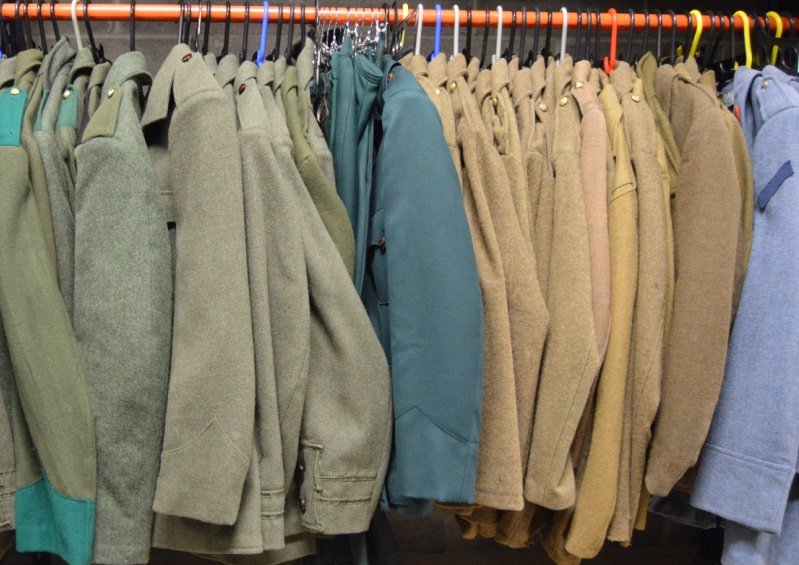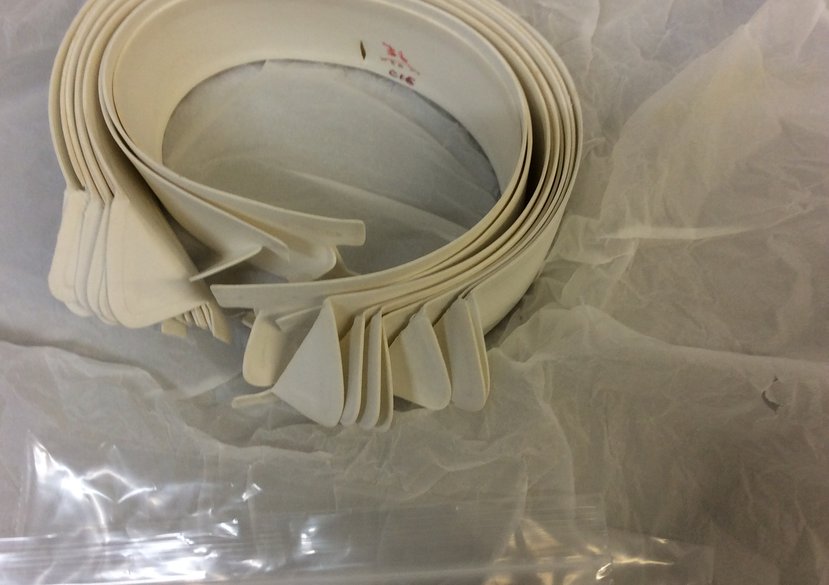
Dress, Masculinities and Memory: Commemorating the Revolutionary Body in Ireland
This thesis analyses the commemoration of the Revolutionary Period (1912–1923) in Ireland during the current Decade of Centenaries from 2012 to 2023 by exploring the embodiment of national memory through dress and the body. I question the impact of the commemoration of conflict on constructions of masculine and national identity. I analyse how conflict is interpreted, remembered and re-enacted on and through the male body as part of the practice of remembrance. Finally, I set out to demonstrate how an analysis of dress and the body can destabilise the history and memory of conflict and force new perspectives on the continual reshaping of material culture through remembrance.
The Revolutionary Period saw a series of violent conflicts and political crises erupt across Ireland that led to the foundation of the Irish Free State in 1922 and eventually the Republic of Ireland in 1949. As of 2012, Ireland entered a period of successive centenary commemorations that have enabled a re-examination of national memory and the re-enactment of history. Throughout this research, I engage ideas of authenticity, myth, and the making of history to analyse how bodies, living and dead, dressed and undressed, move through the time and space of conflict. This research reconciles the history of the Revolutionary Period with the history of commemoration, with a particular focus on how Irish masculinities and nationhood are articulated in history-making and the relationship between embodied memory and dress.
Through an interdisciplinary methodological framework, this thesis engages dress as an embodiment of history and memory to analyse how the Revolutionary Period has and is being commemorated in museum exhibitions, theatre and performance, digital media and as living history. Dress and the body constitute my primary source material with which to complicate Irish national memory, demonstrating the significance of the materials of war, conflict, and crisis in the process of commemoration and in cultivating a national and collective memory.
Key details
School, Centre or Area
Supervisors
Gallery
More about Miriam
Biography
Miriam is an AHRC funded PhD student in the School of Arts and Humanities at the Royal College of Art and the Victoria and Albert Museum. Miriam’s research focuses on dress and the body in constructing masculinities and national identity, and in the commemoration of conflict. With a specific interest in Ireland’s Revolutionary Period from 1912 to 1923, Miriam’s research uses objects and material culture to understand the impact of conflict on remembering, forgetting and the making of history. Other areas of interest include 19th-century men’s fashion, military uniform and fashion, and practices of collecting and displaying dress in museums. Miriam holds a BA in Fashion Design from the National College of Art and Design in Dublin and an MA in the History of Design from the Royal College of Art. She has a background in curation and research and has worked on exhibitions in the V&A, the Charles Dickens Museum, and the Jewish Museum London.
Degrees
MA History of Design, Royal College of Art/Victoria and Albert Museum, (Distinction) 2015
BA Fashion Design, National College of Art and Design, (First-class honours) 2012
Experience
Collections Manager, Charleston Trust, 2022
Visiting Lecturer, RCA/V&A History of Design, 2021
Assistant Curator, Technicolour Dickens: The Faces and Fashions of Charles Dickens, Charles Dickens Museum, 2020
Collaborative Doctoral Partner Researcher, Masculinities, V&A, 2019 – 2020
Researcher, Textile Society Project: Mr. & Mrs Charles Dickens: Intimate Objects and Private Textiles, Charles Dickens Museum, 2018 – 2019
Assistant Curator, Jewish Museum London, 2016 - 2017
Awards
Design History Society Outreach & Events Grant, 2019
V&A/RCA History of Design Montjoie Award, 2014
National College of Art and Design Staff Prize, 2012
Funding
TECHNE AHRC Doctoral Training Scholarship, 2017–2021
Research outputs
Memories and Borders: Examining Identity and Nationalism through Material Culture, V&A, 2019:
Co-founder of Memories and Borders initiative which began as a workshop at the V&A museum that sought to explore ideas of place, identity and memory through material culture.
Funded by the Design History Society the workshop invited artists, designers and researchers to come together and explore the implications of borders for local, national and global memory.
This project is ongoing and currently being developed into a podcast series.
Textile Society Project: Mr. & Mrs Charles Dickens: Intimate Object and Private Textiles, Charles Dickens Museum, 2018-2019:
'‘Any Man May Be in Good Spirits and Good Temper when He’s Well Dressed’: The Fashion of Charles Dickens, 1837–1870' - Article on Charles Dickens's public and private image, examining his changing fashions and personal style.
'The Dickenses and the Politics of Decoration' - Article on the gendering of interior decoration in the home of Charles and Catherine Dickens.
'Stories told on Silk' - Article on silk playbills produced to commemorate plays written, directed and performed by Dickens in the collections at the Charles Dickens Museum.
Conferences
'Dress, Masculinities and Memory: Commemorating the Revolutionary Body in Ireland', Fashion and Clothing Cultures in and of Ireland, 2020
'Mr & Mrs Charles Dickens: Intimate Objects and Private Textiles', Centre for the History of Retailing & Distribution, University of Wolverhampton, 2019.
'The Fashion of Charles Dickens, 1837–1870', Association of Dress Historians, 2019;
'Crisis, Commemoration and Dress: Designing Memory of the Revolutionary Period in Ireland', National Museum of Ireland, 2018;
'Masculinity in Conflict: Sartorial Resistance in England and Ireland, 1914 to 1918', Costume Society, 2016


